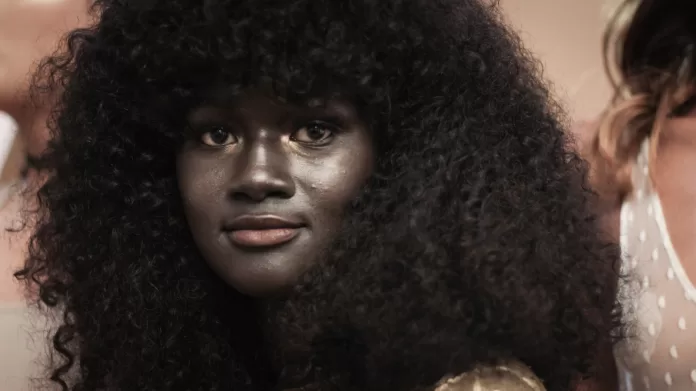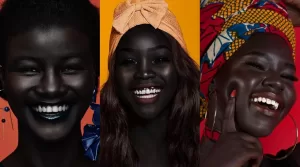Skin tone is an integral aspect of human identity, reflecting the rich tapestry of our global heritage. In Africa, this diversity is particularly pronounced, with a spectrum that ranges from light to very dark complexions.
Diversity in skin tone is a beautiful testament to the variety of human experiences and identities. Each shade carries stories of heritage, culture, and resilience, inviting us to embrace and celebrate our differences. This article explores ten African countries where populations typically exhibit darker skin tones, delving into the cultural, historical, and environmental factors that contribute to this remarkable diversity.
1. South Sudan
South Sudan is home to some of the darkest skin tones in Africa, a characteristic closely linked to the region’s high melanin levels. The country’s diverse ethnic groups, including the Dinka, Nuer, and Shilluk, showcase a stunning array of deep complexions. In traditional South Sudanese culture, skin tone is often celebrated through art, dance, and storytelling, emphasizing the pride that accompanies these darker shades.
The harsh climate of South Sudan, with its strong UV exposure, has played a significant role in shaping the skin tones of its people. For many, dark skin is not only a physical trait but also a symbol of cultural identity and heritage.
2. Senegal
Senegal boasts a vibrant population with a wide range of skin tones, from medium to very dark. Ethnic groups such as the Wolof, Serer, and Toucouleur contribute to this diversity. The country’s sunny climate has favored the adaptation of darker skin, which offers better protection against UV radiation.
Senegalese culture is rich and multifaceted, with music, dance, and art reflecting the beauty of dark skin. The country’s fashion scene often embraces natural beauty, challenging traditional beauty standards and celebrating the unique allure of darker complexions.
3. Ghana
Ghana’s population is equally diverse, with ethnic groups like the Akan, Mole-Dagbani, and Ewe displaying a variety of skin tones. Many Ghanaians have very dark skin, which is common throughout the West African region. The interplay of cultural practices and traditions in Ghana emphasizes the beauty of darker skin, seen in traditional ceremonies, clothing, and art forms.
The Ghanaian emphasis on community and cultural pride fosters an environment where individuals celebrate their identities. The rich history of the country, including its struggles and triumphs, adds depth to the appreciation of skin tone among its people.
4. Nigeria
As Africa’s most populous country, Nigeria is a mosaic of ethnic groups, including the Yoruba, Igbo, and Hausa. Many Nigerians exhibit dark skin tones, and this diversity is celebrated through vibrant cultural expressions in music, dance, and fashion. Nollywood, Nigeria’s thriving film industry, has played a significant role in promoting positive representations of dark-skinned individuals, challenging stereotypes and celebrating African beauty.
Nigeria’s cultural festivals often highlight the richness of its heritage, showcasing traditional attire and celebrating the beauty of dark skin. The nation’s history, marked by resilience and creativity, reinforces the pride many Nigerians feel in their skin color.
READ ALSO: Things to Do the Minute You’re Overwhelmed With Anger
5. Kenya
Kenya is another African nation where skin tones range from light to very dark. Ethnic groups like the Kikuyu, Luo, and Maasai often have deep, rich complexions, a reflection of the country’s diverse climates and high UV levels. Kenyan culture, with its myriad of languages, traditions, and art forms, celebrates this diversity through storytelling, music, and dance.
The Maasai, in particular, are renowned for their striking appearance, characterized by their dark skin and vibrant traditional attire. Their customs and practices, including intricate beadwork and traditional ceremonies, emphasize the beauty and cultural significance of darker skin.
6. Rwanda
Rwanda’s population includes groups such as the Hutu, Tutsi, and Twa, many of whom exhibit dark skin tones. The country’s high altitude and UV exposure contribute to the prevalence of darker skin among its people. Rwandan culture is rich in tradition and community, often expressing pride in identity through storytelling and performance.
The resilience of Rwandans, especially in the wake of historical challenges, adds to the narrative of strength associated with their skin tones. Cultural events, such as the annual Kwita Izina gorilla naming ceremony, often highlight the beauty of Rwandan heritage and the importance of embracing diversity.
7. Malawi
Malawi is home to a population that generally displays deep, dark skin tones. Ethnic groups such as the Chewa and Yao reflect this diversity, shaped by the country’s tropical climate and environmental factors. The cultural landscape of Malawi is vibrant, with traditional music, dance, and art celebrating the beauty of darker skin.
Malawian identity is closely tied to community and family, with many cultural practices emphasizing the importance of heritage. Festivals often serve as platforms for showcasing the richness of Malawian culture and the pride that accompanies dark skin.
8. Democratic Republic of the Congo (DRC)
The DRC is known for its vast ethnic diversity and a population that predominantly has darker skin tones. The country is home to groups such as the Bantu and Pygmies, who embody a range of cultural practices and traditions. The DRC’s rich musical heritage, including genres like soukous and rumba, often celebrates the beauty of blackness and African identity.
In the DRC, darker skin tones are embraced as part of the country’s cultural narrative. Traditional ceremonies and celebrations often highlight the significance of heritage, reinforcing the pride associated with darker complexions.
9. Tanzania
Tanzania showcases a wide array of skin tones among its diverse ethnic groups, including the Sukuma, Chaga, and Maasai. Many Tanzanians exhibit darker skin, adapted to the country’s warm climate and high UV exposure. The vibrant culture of Tanzania, characterized by its music, dance, and art, celebrates the beauty of diverse skin tones.
Tanzanian society emphasizes the importance of community, often reflecting this in cultural practices and celebrations. Events like the Zanzibar International Film Festival promote cultural exchange and highlight the rich narratives of African identity, including the celebration of dark skin.
10. Zimbabwe
Zimbabwe’s population features a variety of skin tones, with many individuals exhibiting deep, rich complexions. Ethnic groups such as the Shona and Ndebele contribute to this diversity, each with its own cultural heritage and practices. Zimbabwean culture, reflected in its music, art, and traditional ceremonies, often celebrates the beauty and significance of darker skin.
The resilience of Zimbabweans, shaped by their historical experiences, is intertwined with their cultural identity. Festivals and communal gatherings frequently emphasize the importance of heritage and the celebration of diverse skin tones.
Conclusion
The diversity of skin tones across Africa is a beautiful reflection of the continent’s rich cultural heritage. From the deep, dark complexions of South Sudan to the vibrant celebrations in Nigeria and Tanzania, each country offers a unique perspective on the significance of skin color in shaping identity.
As we continue to explore and appreciate the complexities of human diversity, it’s crucial to recognize the beauty inherent in all skin tones. Celebrating this spectrum fosters a more inclusive and respectful global community, where every individual is valued for their unique identity and heritage. Embracing diversity is not just about recognizing differences; it’s about celebrating the shared humanity that connects us all.


